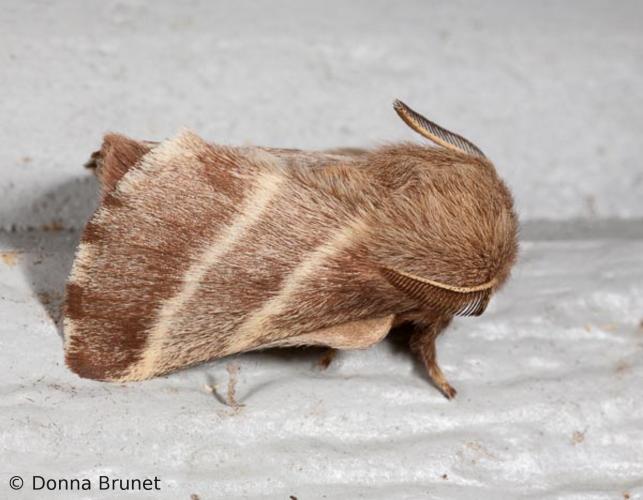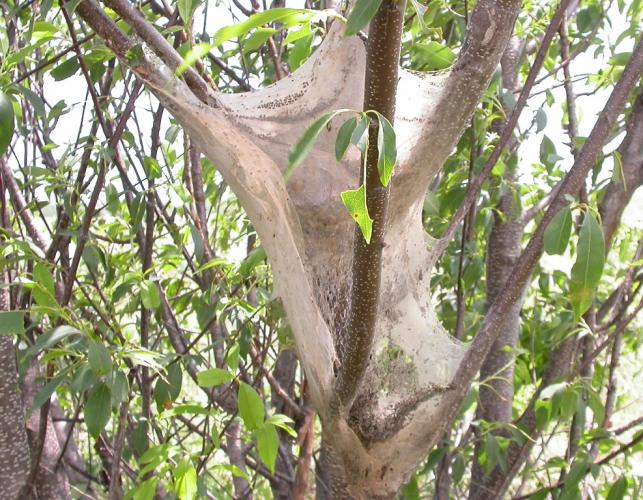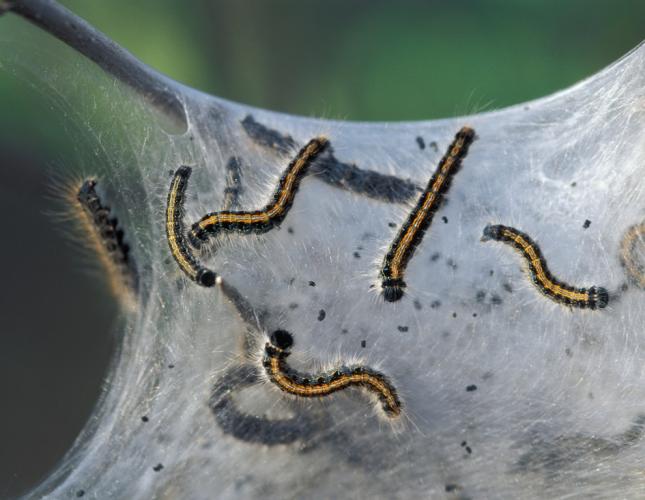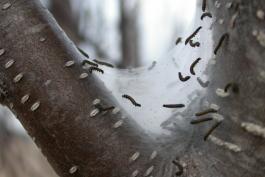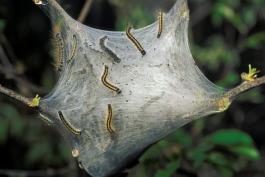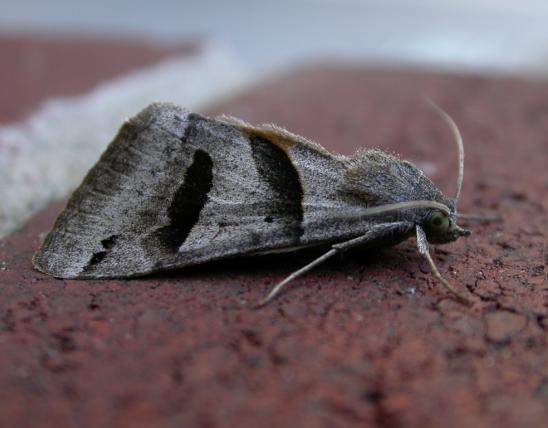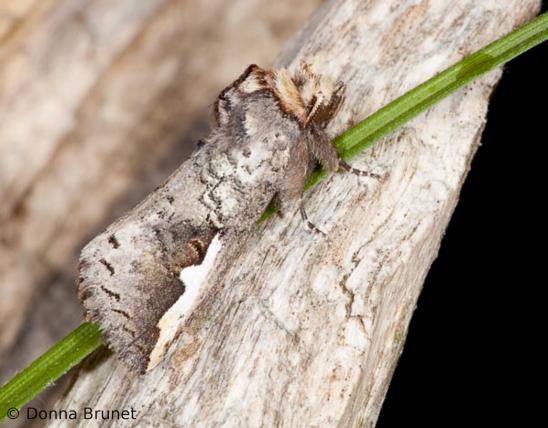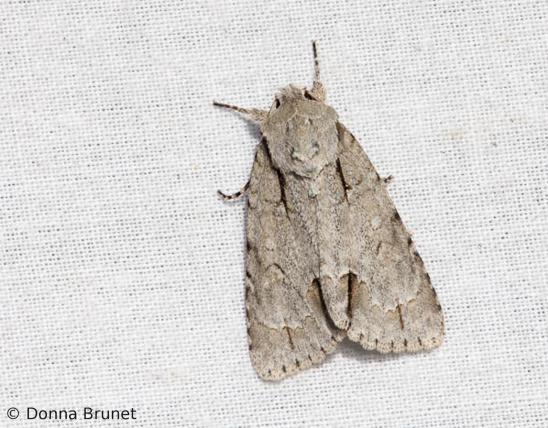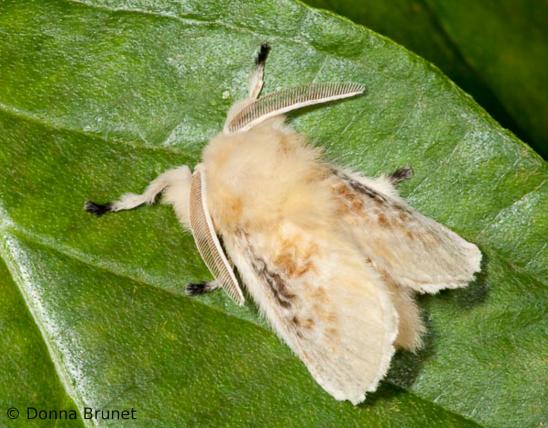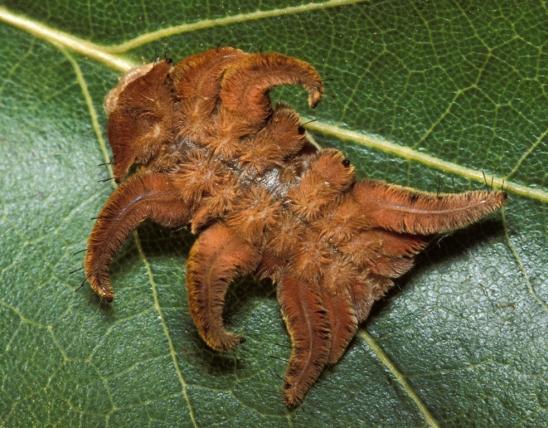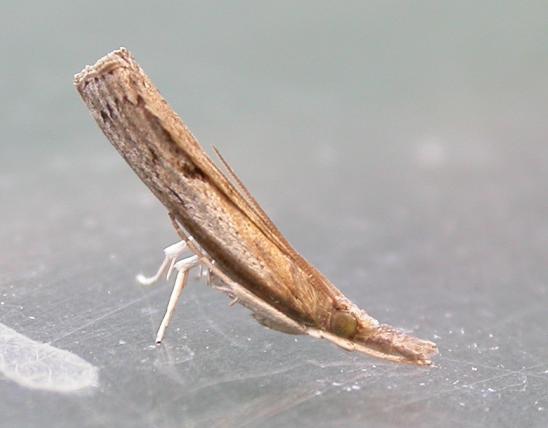
Adult eastern tent caterpillar moths are brown with 2 light-colored bands cutting across the forewing. Sometimes, the middle band between the two lines is lighter or whitish. Like others in their family, these moths are medium-sized, with thick, long scales that make them look furry. Both males and females have feathery antennae. Females are paler and more yellowish, and larger, with more rounded wings.
Caterpillars are much more easily seen than the adults. They live in groups in “tents” made by innumerable silken strands in the crotches of host trees. The caterpillars have long, pale hairs; the body is mottled and striped with blue, yellow, and black, with a whitish line running down the back. The head is dark.
Similar species: The closely related forest tent caterpillar (M. disstria) looks very similar, but adults have dark (not whitish) lines on the forewings. The larvae do not have an unbroken line along the back; instead, there is a light-colored mark on each segment down the back — the shape of each mark is like a keyhole, shoeprint, or bowling pin. Also, the communal larvae of that species do not create tents. Instead, they only build silken mats and guidelines on trunks and branches that guide them to and from feeding locations and group gathering sites.
Wingspan: ¾–1¾ inches.
Statewide.
Habitat and Conservation
In springtime, the white “tents” created by the caterpillars in the crotches of trees — especially trees in the apple-cherry-plum family — are hard to miss. As the weeks progress and the caterpillars grow larger, the tents become soiled with their excrement. By midsummer, the tents are falling apart, as the full-grown caterpillars wander off alone to create cocoons and pupate.
Food
Caterpillars are reported on a wide variety of host trees, especially trees in the rose family: apple, cherry, peach, plum, crabapple, and so on. Thus they eat both native trees as well as cultivated orchard and landscaping trees.
The adult moths do not eat, for their mouthparts are undeveloped or lacking. In fact, females of this moth family emerge from pupation with all of their eggs fully developed, so they do not need to acquire additional nutrients for growing their eggs.
Status
Very common resident species sometimes injurious to orchard trees.
Life Cycle
There is a single generation yearly, with adults flying in May and June. Soon after mating, females produce a foamy egg mass encircling a twig. The eggs overwinter, and eastern tent caterpillars hatch in the spring. The caterpillars feed on a variety of deciduous and coniferous trees and shrubs. They are gregarious, forming a communal silk tent where they take shelter when not feeding. Older caterpillars wander off alone to form silk cocoons. These dense, white cocoons are filled with a yellow powder.
Human Connections
This species can be a serious pest on orchard trees such as apple, cherry, peach, and plum. Crabapples and other landscaping trees may be eaten, too. Luckily, the severity of infestations is cyclical, and in many cases the defoliation is tolerated by the tree. Young, diseased, or stressed trees, however, may be killed.
Ecosystem Connections
Populations of this species rise and fall in a cycle, with their numbers growing for a number of years, then “crashing” before starting the cycle again.
Not many birds prey on eastern tent caterpillars. With their hairs and striped black and yellowish pattern — especially striking when they are grouped together in a mass — they send a visual warning of toxicity. Indeed, the cherry leaves that they typically eat contain cyanogenic chemicals, and when disturbed, the caterpillars can vomit cyanide juices at their predators. The caterpillars also thrash around the fore part of their bodies when disturbed, which usually causes all their neighbors to join in. The entire wriggling mass is also a predator deterrent.
In years when eastern tent caterpillars are especially numerous, they can chew away most of the leaves on their host trees. This forces the tree to grow a new set of leaves, which is stressful to the tree. Healthy, mature trees can withstand this, but if another stress occurs soon after, such as prolonged drought or disease, it could result in tree death.
